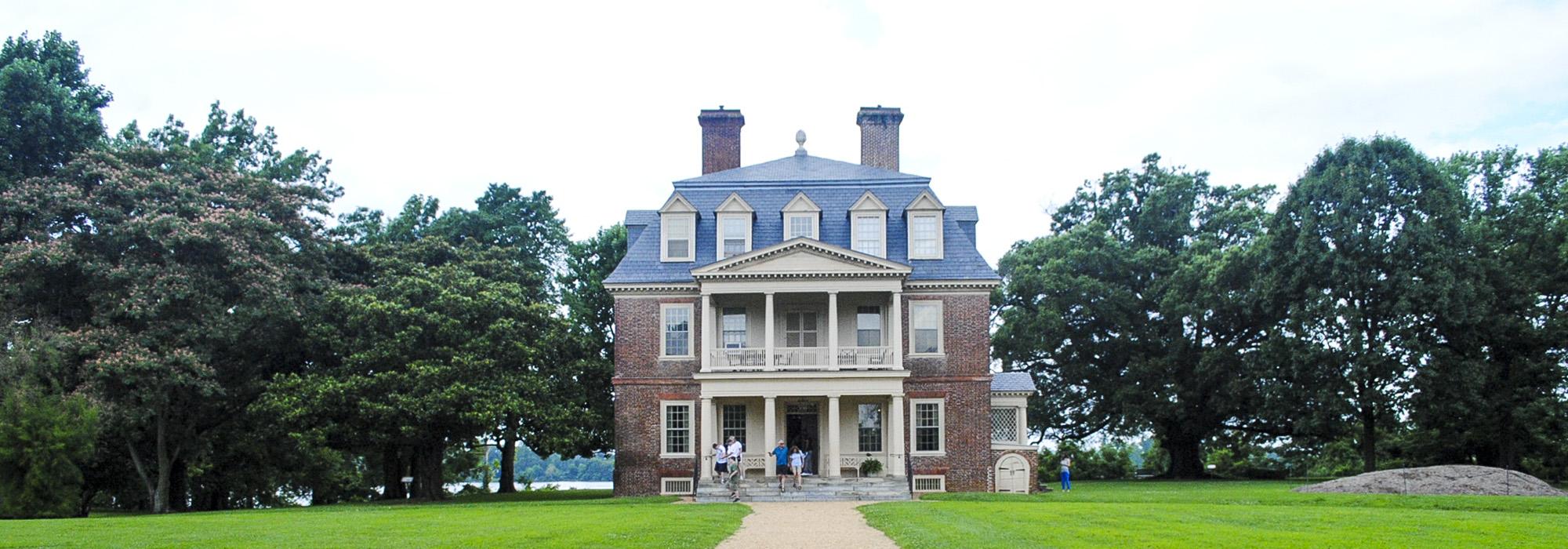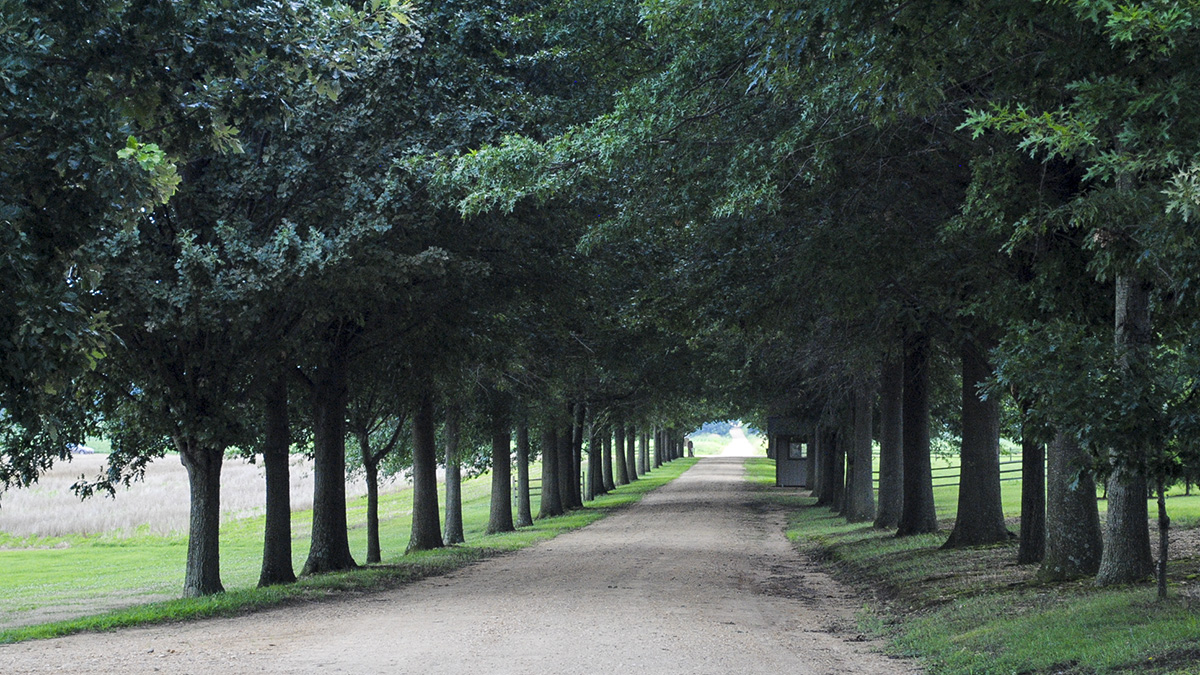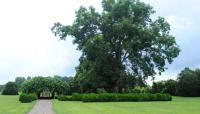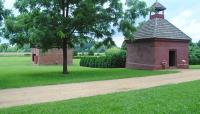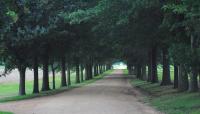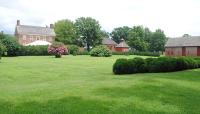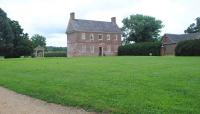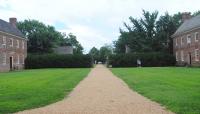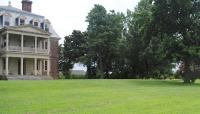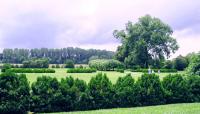Landscape Information
Located on the north bank of the James River east of Richmond, the plantation was founded in 1613 and has been a working farm since 1638. Initially part of a 9,376-acre estate, Shirley evolved into a formally arranged complex and was the largest agricultural operation in Virginia by the end of the eighteenth century. Bounded by agricultural fields and the James River to the west, the estate is anchored by an axial entry road lined with oaks and enclosed by an entry gate which leads to the main house.
Two, three-story bedroom wings originally flanked the Georgian-style house. Constructed between 1723 and 1738 by Elizabeth Hill and John Carter, the main house still overlooks four dependencies symmetrically aligned in a Queen Anne forecourt, typical of English estates. Along with the main house and dependencies, formal brick farm buildings were also arranged symmetrically on a 12-foot grid.
Shirley’s formal gardens lay south of the house just behind the former laundry building. One garden plot is bordered by boxwood hedges and divided into quadrants by a row of boxwoods and a path that extends from the laundry building to a grape arbor. A second, elongated rectangular planting bed borders the west edge of the boxwood garden, filled with lilies, hydrangeas, and small trees. Mature trees, including a 350-year-old willow oak, frame some of the structures and dot the lawn.
Presently occupying 800 acres, the estate is managed by descendants of the original owners. It was designated a National Historic Landmark in 1970.



